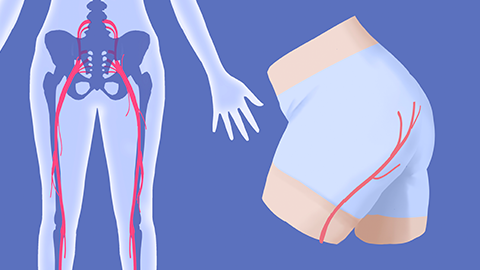What are the symptoms of sciatica in women?
Common symptoms of sciatica in women include pain in the lower back and sacral area, radiating leg pain, numbness and weakness in the lower limbs, tenderness along the sciatic nerve, and limited mobility. These symptoms are often related to nerve compression and require treatment based on the underlying cause. If pain progressively worsens, leg weakness develops, or urinary abnormalities occur, prompt medical attention is recommended.
1. Lower back and sacral pain: Pain typically begins in the lower back and sacral region, presenting as dull, aching, or stabbing discomfort. It significantly worsens with prolonged sitting, bending forward, or physical exertion, and may temporarily improve with rest. In some patients, the pain radiates to the buttocks.
2. Radiating leg pain: Pain travels along the path of the sciatic nerve, extending from the buttocks down the back of the thigh, along the outer side of the lower leg, and reaching the top or sole of the foot. The pain may feel like electric shocks or burning sensations and can intensify during coughing or sneezing.

3. Numbness and weakness in the lower limbs: Numbness occurs in areas controlled by the compressed nerve, such as the outer side of the lower leg or the top of the foot. In severe cases, it may be accompanied by muscle weakness in the legs, leading to foot drop and unsteady gait while walking.
4. Sciatic nerve tenderness: Pressing on areas where the sciatic nerve runs—such as near the ischial tuberosity in the buttocks or the back of the thigh—causes significant tenderness. This pressure may trigger or worsen radiating leg pain and is one of the typical clinical signs.
5. Limited mobility: Due to pain and numbness, movements such as bending, turning, or walking become restricted. When standing, patients may unconsciously lean toward the unaffected side to reduce pressure on the affected nerve. Long-term compensation can lead to abnormal posture.
Daily precautions include avoiding prolonged sitting or standing, using chairs and mattresses of moderate firmness, performing appropriate stretching exercises for the back and waist, keeping the lower back warm to prevent cold exposure, and minimizing activities like bending and lifting heavy objects that may exacerbate nerve compression.




